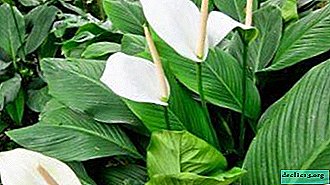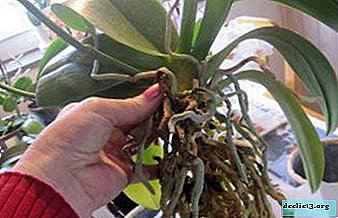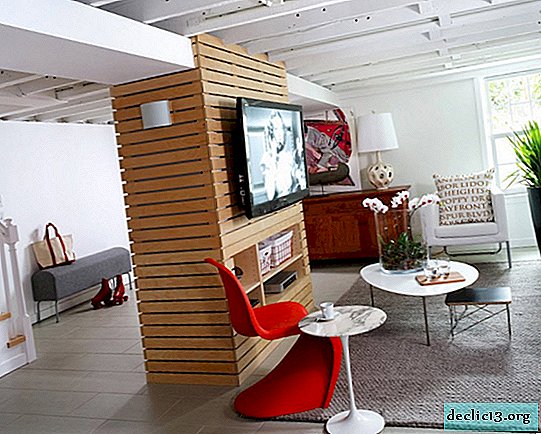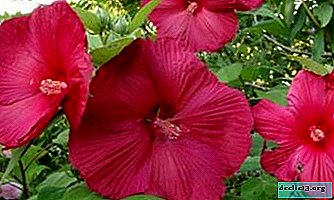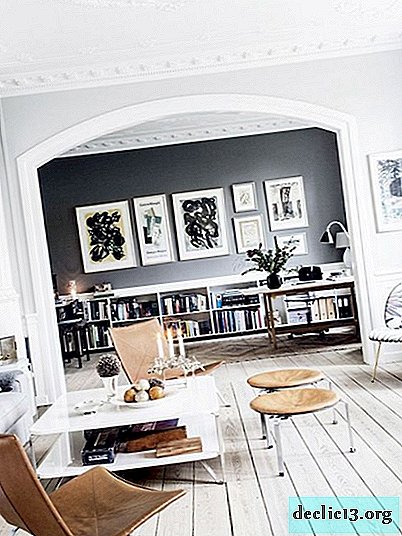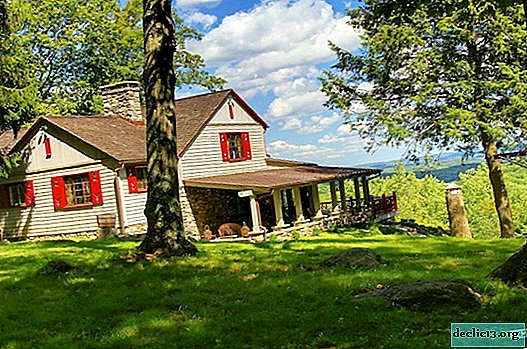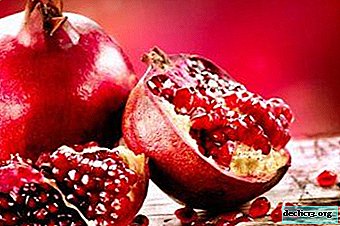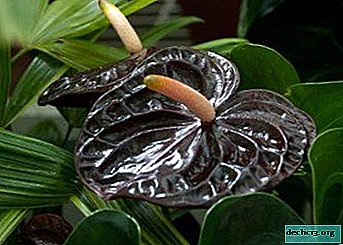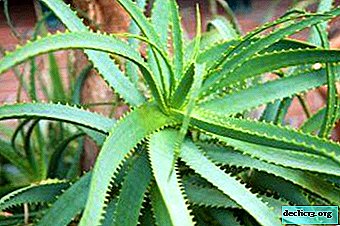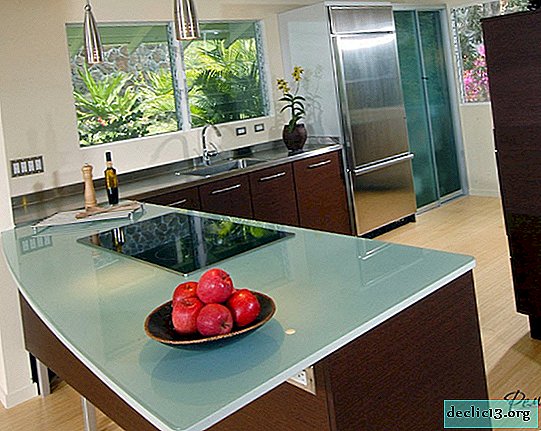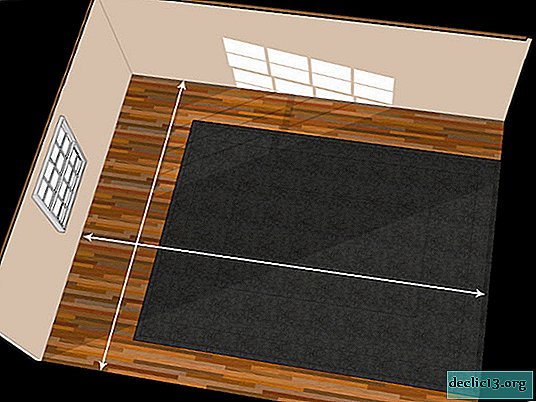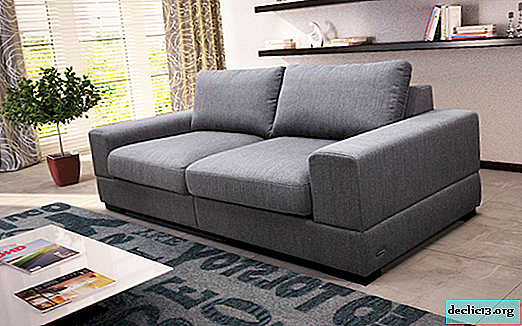The most popular varieties of Syrian hibiscus for the garden: the basic rules of cultivation and reproduction
 With the onset of hot summer, a beautiful flower will bloom in the areas of enterprising summer residents - the Syrian hibiscus.
With the onset of hot summer, a beautiful flower will bloom in the areas of enterprising summer residents - the Syrian hibiscus.
He pleases the eye with his bright petals, reminiscent of the silk fabrics of the garments of oriental princes.
Who is he, this Syrian hibiscus that fascinates gardeners around the world? This article describes in detail varieties of hibiscus Syrian.
Botanical Description
Hibíscus syríacus, or Syrian hibiscus, belongs to the family Malvaceae, to the genus Hibiscus. This flower also bears the names Ketmeria, Syrian rose and Syrian mallow. China is considered its homeland, but it is ubiquitous in India, Korea and West Asia, where a warm climate reigns.
The plant along the Great Silk Road reached Pakistan, from where it came to Greece and the Middle East. The shrub is very popular among gardeners living in the southern regions of Russia (Caucasus, Kuban), Ukraine, Moldova, and in Crimea.
Syrian hibiscus is a deciduous shrub reaching a height of 5-6 meters, but in garden plots its size does not exceed 1.5 meters. Its leaves 5-14 cm long are painted in bright green color and have an ovoid three-lobed shape.Hibiscus flowers are solitary, similar to a bell, they are simple and double, and their color depends on the variety. The shrub bears fruit in September-October; its capsules are small, egg-shaped. This species has low frost resistance and also grows slowly. The shrub begins to bloom from 3-4 years. It is flowering that is the hallmark of Syrian hibiscus: it is magnificent and long.
Popular varieties with photos
Syrian hibiscus is represented by numerous species. The article will consider the most popular varieties.
Osiau Blue

You should start with the view "Oziau Bleu" (fr. Oiseau Bleu). This variety is also called Rose of Sharon and the Rose of Sharon and Shrub Althea. Osiau Blu is a deciduous shrub up to 3 meters high. Dark green leaves have a ribbed shape, and their length reaches 19 cm.
Inflorescences have a violet-blue color with a dark red core. They form a magnificent crown. This variety should be grown in moist, fertile and well-drained soils. He loves the sun, has nothing against partial shade, although in the latter situation he will not be so magnificent.
"Osiau Blue" is a painful variety of hibiscus, which is sometimes affected by aphids and spider mites.Also it is not frost-resistant. This species is suitable for growing as a flowering hedge. Osiau Blue is a laureate of the prestigious Award of Garden Meritawarded by the Royal Horticultural Society.
We offer you to watch a video about the hibiscus Oziau Blue:
Red hart

Another bright representative of the Syrian Hibiscus species is the Red Hart variety (English Red heart) - a fast-growing straight bush with a height of more than 1.5 meters. Its leaves are similar to chrysanthemum: they are dark green in color (often yellow-white before warming) and have a three-lobed shape.
Inflorescences, like those of Oziau Blue, form a lush crown. They are very large, white with a burgundy eye in the middle. Yellow stamens enhance the play of flower colors. Shrub of this variety is photophilous, tolerates shading well. It should be planted in fertile, fresh, drained soils, whose environment can range from slightly acidic to alkaline. The variety is most attractive to butterflies and hummingbirds.
We offer you to watch a video about hibiscus red hart:
Matilda

You can not ignore the "Mathilde" (English Mathilde). It is one of the most colorful varieties of Syrian hibiscus. Shrub straight, reaches a height of 3 meters. Its leaves are dark green with serrated edges. The variety is as lush as its counterparts described above.
The inflorescence is pale pink or pink, inside - a carmine red spot. Filaments are light yellow.
Hibiscus blooms from August to September. It should be planted in sunlit areas and in well-drained soil.Meike

I would also like to designate such a representative of the Syrian hibiscus as the variety "Mike" (German: Maike), which was bred relatively recently. It is considered the most elegant among its appearance. "Mike" is a one and a half meter tall shrub. Dark green leaves (turn yellow in autumn) are ovoid with jagged edges.
Mike has a huge number of distinctive features:
- Firstly, he has large pink flowers with a burgundy eye that smoothly spreads in thin lines to the edges of the petals.
- Secondly, inside the calyx there is another second part, consisting of tiny petals of the same color as the whole flower.
- Thirdly, this variety is well adapted to frost and has a high level of resistance to disease.
Care
Syrian hibiscus does not require special treatment, it is quite easy to care for it. When young green shoots grow on a bush, old ones need to be cut. This is done so that the hibiscus does not thicken. The soil around the plant should be loose without weeds.
During the growing season, which lasts from June to October, the main forage of the bush is fertilizers with a high content of phosphorus and nitrogen. In autumn, during the preparation of the plant for wintering, its diet is supplemented with potash fertilizer.
 From the shrub, it is necessary to constantly pick off withered flowers. The plant is watered only if the soil surface is completely dry. In the dry period, this procedure is performed daily.
From the shrub, it is necessary to constantly pick off withered flowers. The plant is watered only if the soil surface is completely dry. In the dry period, this procedure is performed daily.
Syrian hibiscus is often shaped like a tree. To do this, it is necessary to shorten the branches of a young plant. Then, when the shrub reaches its preferred size, form a crown in the same way. In the first spring weeks, the plant undergoes sanitary pruning: diseased, old and weak shoots are removed.
Breeding
Syrian hibiscus is very easy to propagate. Basically, this is done in two ways: seed and cuttings.
Seeds
- Seeds for 30 minutes are poured with a solution of potassium permanganate.
- Then they are immersed in Epin's solution for 24 hours.
- Only then does seed sowing in a container filled with a mixture of sand and peat.
- The container is covered with glass and put away in a warm place.
- Crops need systematic ventilation and condensate removal.
- After the formation of the leaf plates, they are planted in individual pots, on which light must constantly fall.
- In mid-May, seedlings are planted in open soil.
Cuttings
- In summer, shoots with 2-3 internodes are cut from the bush.
- The lower sections are treated with a growth stimulant.
- Shoots are planted in a greenhouse, covered with peat mix.
- When roots appear on the cuttings, the shoots are transplanted into an individual container filled with soil mixture. It consists of peat, sand, turf and leaf land in a proportional ratio of 1: 1: 1: 1.
- The resulting bushes require watering, their young shoots are pinched.
- Only after the plant has strengthened, it is planted in the garden.
Diseases and Pests
Syrian hibiscus is good because it has high resistance to pests and diseases, but without systematic watering, especially in dry times, it can become a home for:

- aphids;
- spider mites;
- thrips;
- whiteflies.
To solve this problem, the plant must be treated with a solution of some insecticidal preparation:
- Fitoverma.
- Karbofosa.
- Actellika.
- Inta-vira.
Hibiscus grown outdoors is sometimes affected by chlorosis. This is manifested in the falling of the lower leaf plates and the appearance of young pale yellow instead of them. In this case, an iron chelate is added to the water during irrigation. To prevent this situation, in the spring a complex mineral fertilizer with nitrogen is introduced into the soil.
If hibiscus does not bloom if all conditions are met, then a small content of boron and phosphorus is possible in the soil.
Syrian hibiscus is a great choice for a beginner gardener. Among the many varieties of this species, each grower will find one that he likes. Hibiscus will decorate any area with its bright crown of flowers, in return asking only a little attention to itself.

